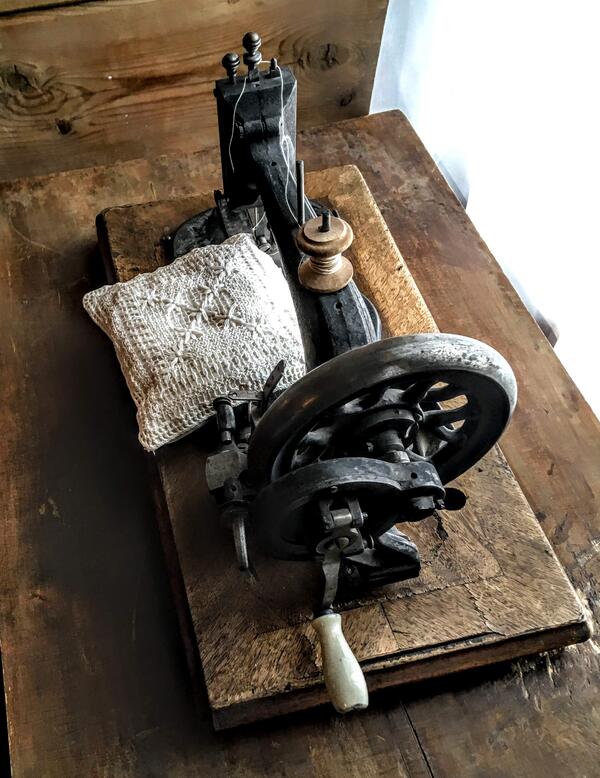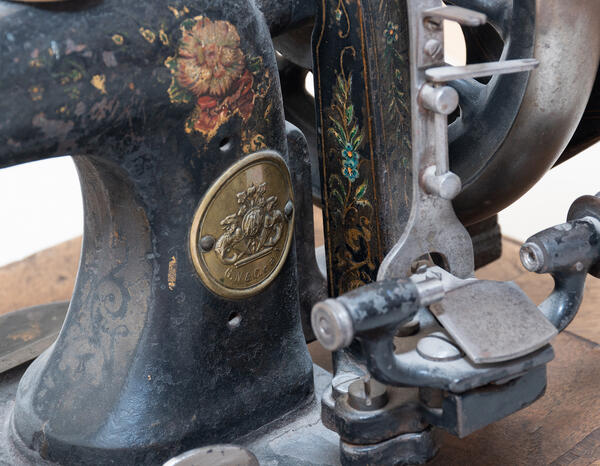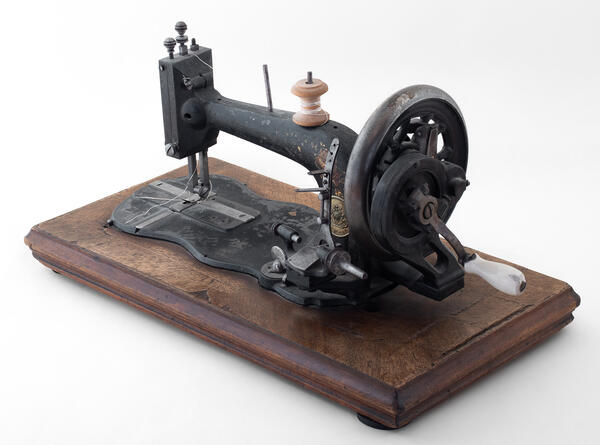The first attempts to create a sewing machine were made in the 18th century. In 1755, Charles Wiesenthal patented a needle for mechanical sewing. 35 years later, furniture maker Thomas Saint invented, according to some researchers, the first sewing machine, but his innovation was lost among his other inventions.
From then on, attempts to create a better sewing machine did not stop. Each subsequent model became more complicated and improved, faster and more convenient to use.
The sewing machine, which is presented in the collection of the Apartment-Museum of the Ulyanov Family, consists of a cast-iron workboard, a platform and a body, or arm. On the right there is a hand crank with a cast-iron wheel, called balance wheel, which is equipped with a handle that ends with a porcelain white grip and is used to activate the machine. There is a device under the wheel for winding threads on a bobbin. On the left there is a rack with a mechanism for refilling the upper thread. The platform is mounted on a wooden stand, on a box.
The machine was donated by a resident of the city of Bryansk, Zinaida Panicheva.
The children in the Ulyanov family were taught needlework by their mother, Maria Alexandrovna. From an early age, she taught them that work makes a person healthy and happy. “She couldn’t stand idleness,” wrote Vladimir Ilyich Lenin’s younger sister, Maria Ulyanova, “being very active by nature. She sewed, knitted, took care of the household, which was usually her responsibility, and in her spare time she read a lot.”
Maria Alexandrovna was an expert in sewing. For example, she embroidered a needlebook with the initials “M.A.U.”, which is one of the exhibits of the Lenin House-Museum in Ulyanovsk.
“I remember,” wrote Maria Ilyinichna, “how much interest learning knitting and sewing sparked in me when I was very young. My mother gave me a large ball of red wool and a crochet hook. I got down to business and soon saw with surprise that some hard objects were sticking out from under the wool. Gradually, as I knitted, small toys, candies, etc. appeared from the ball. And I knitted with passion, trying to solve as soon as possible all the mysteries hidden in this wonderful ball.”
Maria Alexandrovna taught children not only
needlework, but also cooking, storing vegetables and fruits, as well as
culinary arts.





